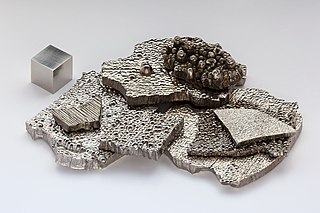
Arequipa is a department in southwestern Peru. It is bordered by the departments of Ica, Ayacucho, Apurímac and Cusco in the north, the Department of Puno in the east, the Department of Moquegua in the south, and the Pacific Ocean in the west. Its capital, also called Arequipa, is Peru's second-largest city.
Pukara means a ruin of the fortifications made by the natives of the central Andean cultures.

Ticlla is a 5,072-metre-high (16,640 ft) mountain in the Chila mountain range in the Andes of Peru. It is located in the Arequipa Region, Caylloma Province, on the border of the districts of Caylloma and Tuti. Ticlla lies southwest of Jatunchungara and Chungara.

Llamuqa is a mountain with archaeological remains in the Andes of Peru, about 4,794 metres (15,728 ft) high. It is situated in the Arequipa Region, La Unión Province, Huaynacotas District.

Ancachita is a mountain in the Andes of Peru, about 5,131.3 metres (16,835 ft) high. It is situated in the Arequipa Region, Caylloma Province, on the border of the districts Callalli and Chivay, east of Chivay. Ancachita lies north of the higher mountains Huarancante and Jello Jello.

Wiswillani or Q'asa is a mountain in the Andes of Peru, about 5,070.3 metres (16,635 ft) high. It is situated in the Arequipa Region, Caylloma Province, on the border of the districts Tisco and Callalli. The mountain lies south of the lake Samaquta.

Ancasi is a mountain in the Huanzo mountain range in the Andes of Peru, about 5,000 metres (16,404 ft) high. It is situated in the Arequipa Region, La Unión Province, Puyca District. It lies southwest of Jatun Huaychahui. Chuañuma is east of Ancasi.

Jatunchungara is a 5,287-metre-high (17,346 ft) mountain in the Chila mountain range in the Andes of Peru. It is located in the Arequipa Region, Caylloma Province, on the border of the districts of Caylloma and Sibayo. It lies north of Chungara and Mesa Chungara. There is a small lake north of the mountain named Chungara.

Teclla is a 5,360-metre-high (17,590 ft) mountain in the Chila mountain range in the Andes of Peru. It is located in the Arequipa Region, Caylloma Province, Lari District. Teclla lies northwest of Mismi and Quehuisha.

Ticlla is a 5,303-metre-high (17,398 ft) mountain in the Chila mountain range in the Andes of Peru. It is located in the Arequipa Region, Castilla Province, Chachas District. Ticlla lies southwest of Chila and Chila Pillune at a valley named Puncuhuaico. Its intermittent stream flows to Chachas Lake.
Tiklla or Tiqlla may refer to:

Sawsi is a 4,942-metre-high (16,214 ft) mountain in the Andes of Peru. It is situated in the Arequipa Region, Castilla Province, on the border of the districts of Chachas and Orcopampa. Sawsi lies at a lake named Machuqucha.

Anqasi is a mountain in the Andes of Peru, about 4,400 metres (14,436 ft) high. It is situated in the Ayacucho Region, Lucanas Province, Cabana District. It lies north of a mountain named Inka Wasi.

Sukna is a 5,120-metre-high (16,798 ft) mountain in the Andes of Peru. It is located in the Arequipa Region, Castilla Province, on the border of the districts of Ayo and Choco. Sukna lies southwest of Qallwa.

Jañuma Pirwa is a 5,125-metre-high (16,814 ft) mountain in the Andes of Peru. It is located in the Arequipa Region, Caylloma Province, Tisco District. It lies southwest of Chuqi Pirwa and southeast of Pirwa.

Pirwa is a mountain in the Andes of Peru, about 5,125 m (16,814 ft) high. It is located in the Arequipa Region, Caylloma Province, Tisco District. It lies northwest of Jañuma Pirwa.

Chuqi Pirwa is a mountain in the Andes of Peru, about 4,800 m (15,700 ft) high. It is located in the Arequipa Region, Caylloma Province, Tisco District, and in the Espinar Province, Yauri District. It lies northeast of Jañuma Pirwa and east of Pirwa.

T'allani Urqu is a mountain in the Andes of Peru which reaches a height of approximately 4,900 m (16,100 ft). It is located in the Arequipa Region, Caylloma Province, Caylloma District, and in the Condesuyos Province, Cayarani District. T'allani Urqu lies southeast of Kuntur Salla.






